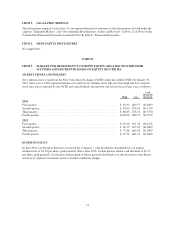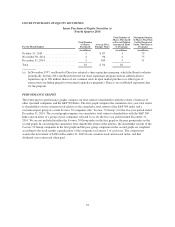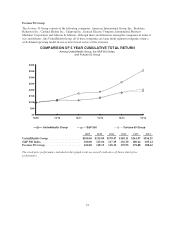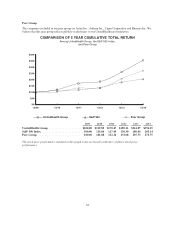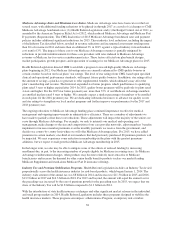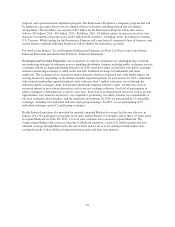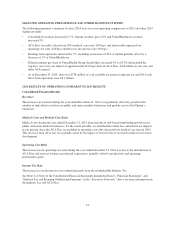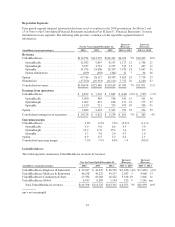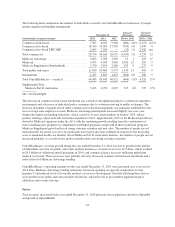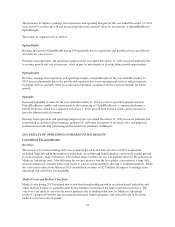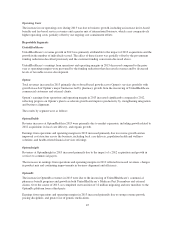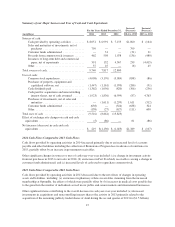United Healthcare 2014 Annual Report Download - page 40
Download and view the complete annual report
Please find page 40 of the 2014 United Healthcare annual report below. You can navigate through the pages in the report by either clicking on the pages listed below, or by using the keyword search tool below to find specific information within the annual report.Medicare Advantage Rates and Minimum Loss Ratios. Medicare Advantage rates have been cut over the last
several years, with additional funding reductions to be phased-in through 2017 as a result of (a) changes to CMS
Medicare Advantage benchmark rates; (b) Health Reform Legislation; and (c) the Budget Control Act of 2011, as
amended by the American Taxpayer Relief Act of 2012, which reduced Medicare Advantage and Medicare Part
D payments (Sequestration). The CMS final notice of 2015 Medicare Advantage benchmark rates and payment
policies includes additional significant reductions for 2015. These industry level reductions, including the impact
of the Industry Tax described below, resulted in revenue reductions and incremental assessments totaling more
than 6% of revenue in 2014 and more than an additional 3% in 2015, against a typical industry forward medical
cost trend of 3%. The impact of these cuts to our Medicare Advantage revenues is partially mitigated by
reductions in provider reimbursements for those care providers with rates indexed to Medicare Advantage
revenues or Medicare fee-for-service reimbursement rates. These factors affected our plan benefit designs,
market participation, growth prospects and expectation of earnings for our Medicare Advantage plans for 2015.
Health Reform Legislation directed HHS to establish a program to reward high-quality Medicare Advantage
plans beginning in 2012. Our Medicare Advantage rates are currently enhanced by CMS quality bonuses in
certain counties based on our local plans’ star ratings. The level of star ratings from CMS, based upon specified
clinical and operational performance standards, will impact future quality bonuses. In addition, star ratings affect
the amount of savings a plan has to generate to offer supplemental benefits, which ultimately may affect the
plan’s membership and revenue. The historical expanded star bonus program, which paid bonuses to qualifying
plans rated 3 stars or higher expired after 2014. In 2015, quality bonus payments will be paid only to plans rated
4 stars and higher. For the 2015 star bonus payment year, more than 37% of our Medicare Advantage members
are enrolled in plans rated 4 stars or higher. We currently expect a similar percentage of members to be enrolled
in such plans for the 2016 payment year. We are dedicating substantial resources to advance our quality scores
and star ratings to strengthen our local market programs and further improve our performance for the 2017 and
2018 payment years.
The ongoing reductions to Medicare Advantage funding place continued importance on effective medical
management and ongoing improvements in administrative efficiency. There are a number of adjustments we
have made to partially offset these rate reductions. These adjustments will impact the majority of the seniors we
serve through Medicare Advantage. For example, we seek to intensify our medical and operating cost
management, make changes to the size and composition of our care provider networks, adjust members’ benefits,
implement or increase member premiums over the monthly payments we receive from the government, and
decide on a county-by-county basis where we will offer Medicare Advantage plans. For 2015, we have added
premiums in certain markets; one-third of our members that had previously purchased $0 premium products will
be impacted. We may experience some reduction in membership in the plans with the greatest premiums
additions, but we expect overall growth in Medicare Advantage membership in 2015.
In the longer term, we also may be able to mitigate some of the effects of reduced funding by increasing
enrollment due, in part, to the increasing number of people eligible for Medicare in coming years. As Medicare
Advantage reimbursement changes, other products may become relatively more attractive to Medicare
beneficiaries and increase the demand for other senior health benefits products such as our market-leading
Medicare Supplement and stand-alone Medicare Part D insurance offerings.
Industry Tax and Premium Stabilization Programs. Health Reform Legislation includes an Industry Tax levied
proportionally across the health insurance industry for risk-based products, which began January 1, 2014. The
industry-wide amount of the annual tax was $8 billion in 2014 and increases to $11.3 billion in 2015 and 2016,
$13.9 billion in 2017 and $14.3 billion in 2018. For 2019 and beyond, the amount will equal the annual tax for
the preceding year increased by the rate of premium growth for the preceding year. In 2015, we expect that our
share of the Industry Tax will be $1.8 billion compared to $1.3 billion in 2014.
With the introduction of state health insurance exchanges and other significant market reforms in the individual
and small group markets in 2014, Health Reform Legislation includes three programs designed to stabilize the
health insurance markets. These programs encompass: a Reinsurance Program; a temporary risk corridors
38





